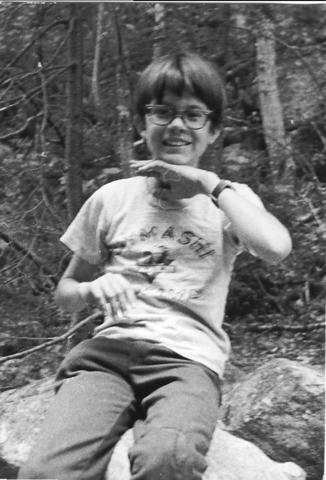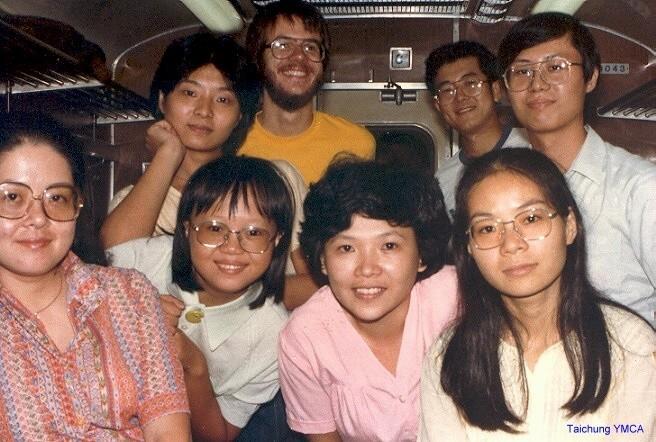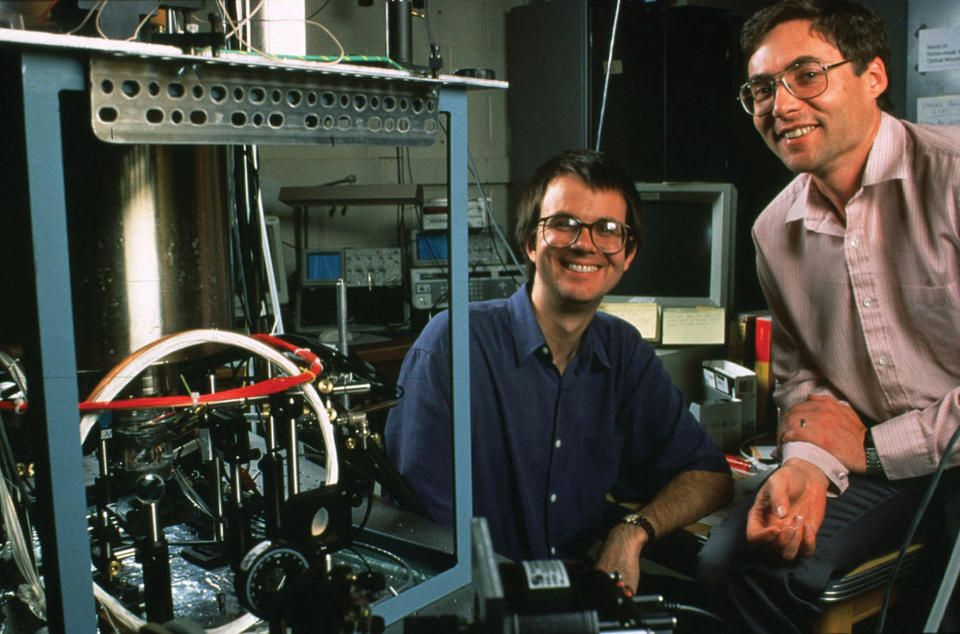The Person behind the Nobel Prize: Eric Cornell
Eric Allin Cornell was born in Palo Alto, California, on December 19, 1961. His parents were both Stanford University graduate students at the time—his father in civil engineering, his mother in English. Two years later, the family moved to Cambridge, Massachusetts, where Cornell’s father taught engineering at the Massachusetts Institute of Technology.

Cornell’s father helped him calculate the center of mass of rockets he designed, and, in lieu of bedtime stories, challenged his son with what Cornell would later recognize as classic physics brainteasers. And although Cornell’s technical aptitude would manifest itself more obviously in his later career, his mother’s example would also have a major influence.
“I think that writing—and writing well—is very, very important in science,” Cornell says. “The discipline of writing well forces you to think clearly.”
Cornell gravitated toward physics under the guidance of his high school physics teacher, John Samp, and, during his first year at Stanford University, physicist Blas Cabrera. Cornell got up the nerve to ask Cabrera for a job in his lab, and for the rest of his time at Stanford, he worked part-time in Cabrera’s low-temperature physics group, studying magnetism and other phenomena.
But it wasn’t an entirely linear journey. After sophomore year, when the scientific path was seeming a bit too predestined for his taste, Cornell took a leave from Stanford and spent nine months in Taiwan and China. A combination of the drudgery of learning Chinese characters and the realization that “being good at something is hardly a reason to avoid doing it,” as he put it in his Nobel biography, brought him back to Stanford with renewed enthusiasm for physics.

After graduating from Stanford in 1985, Cornell returned to Cambridge, where he spent five years earning his Ph.D. at MIT in physicist David Pritchard’s lab. His research focused on measuring very precisely how a single ion (an atom with an electric charge) moves in a magnetic field. The experiment had the ambitious goal of calculating the mass of the universe’s mysterious, unseen dark matter that is believed to hold together galaxies. While Cornell and his student colleagues did manage to capture ions and make precision measurements of them, the nature of dark matter has remained elusive.
In 1990, while wrapping up his doctoral work, Cornell went to Boulder to give a talk to NIST Fellow David Wineland’s group, one of the world’s leading research groups for trapping and measuring individual ions. Though Wineland didn’t have a spot for Cornell, in the audience was physicist Sarah Gilbert, then a Wineland group postdoctoral researcher. She called her husband, University of Colorado Boulder (CU) physicist Carl Wieman, who invited Cornell to stop by the NIST-CU joint institute JILA, a top atomic-physics research center.

Cornell saw an opportunity to develop skills in trapping and cooling matter with lasers. Wieman was a leader in laser cooling, which by 1990 had become a core technology for conducting experiments in atomic physics. Cornell was particularly attracted to Wieman’s lab when he saw that Wieman had a laser simple enough to be run by one graduate student, Chris Monroe (now a researcher at the NIST-University of Maryland Joint Quantum Institute).

“Carl was really a genius at paring things down to the minimum,” Cornell says. He adds that such simplicity seemed essential for making important discoveries in the rapidly moving field of laser cooling.
“I was a little bit late to this whole game of doing laser cooling,” Cornell says. “So I thought, if I’m going to get into this business, I need to jump into it really fast; I can’t spend a lot of time building up a complicated apparatus.”
In October 1990, Cornell, then 28, joined Wieman’s group in Boulder. From the outset, they hoped to use laser cooling and trapping techniques to create a Bose-Einstein condensate (BEC), a hypothesized “superatom” in which atoms at extremely low temperatures would essentially lose their individual identities and form a single quantum wave.

Beyond the thrill of the chase, Cornell was deeply interested in the prospects of BECs as tools of science. When physicists in the early 20th century developed the theory of quantum mechanics, they were suddenly able to describe the microscopic world with startling detail. New realms in physics opened up again when quantum mechanics revealed itself in the “macroscopic” world that we can readily see. Examples of large-scale quantum phenomena included lasers, superfluidity (fluids that flow with zero friction) and superconductivity (materials that conduct electricity without resistance).
But Cornell was daunted by the vast and complex literature that already existed on those topics.
“I had always thought superfluidity and superconductivity were really interesting but I found them difficult to understand,” he says. “Sometimes the easiest way to understand something is to start fresh and put it together yourself, but in a simpler system. Bose-Einstein condensate is the simplest of the ‘super’ things.”
Even so, Cornell and Wieman were taking on a formidable technical challenge with no guarantee of success. But they made progress, and after two years, when he was ready to go on the job market, Cornell had a proposal for producing a BEC. It still required so many challenging advances, however, that he had trouble convincing others; both MIT and the University of California, Berkeley passed on hiring him. So, ignoring the conventional wisdom about the importance of getting out from the shadow of one’s advisor when launching a scientific career, he took a permanent position at NIST in Boulder as a JILA scientist, just down the hall from Wieman, a University of Colorado scientist. It turned out to be a fortuitous partnership.
“[When Cornell was a postdoc], I was struck by his thoughtfulness in thinking of the broader impacts and significance of the work and how it could go in different and important, new, additional directions that I hadn’t thought about. That’s very unusual in a postdoc.”
– Carl Wieman, professor of physics and education at Stanford University, shared 2001 Nobel Prize in Physics with Cornell

